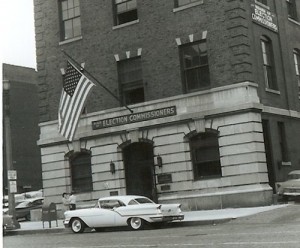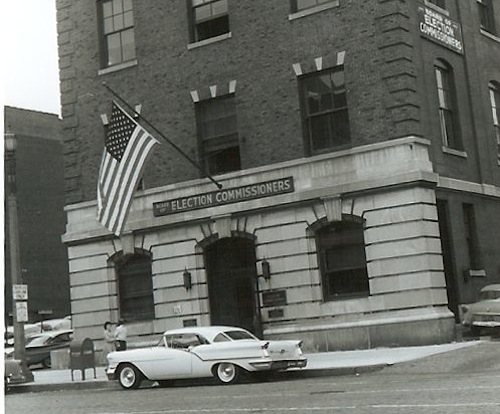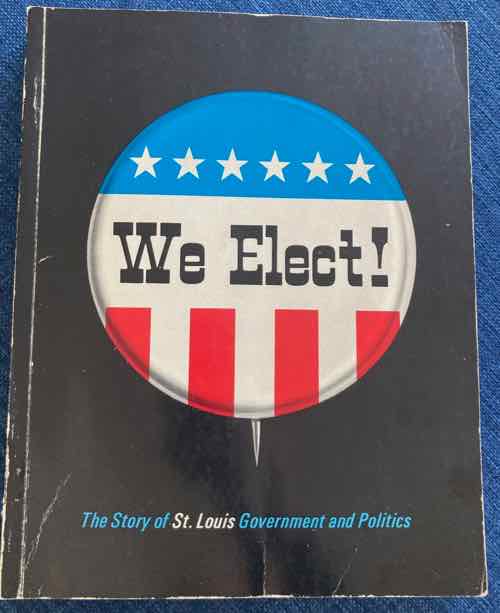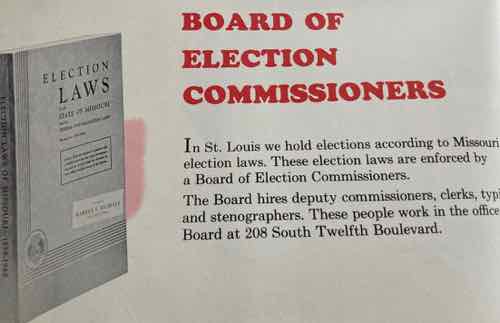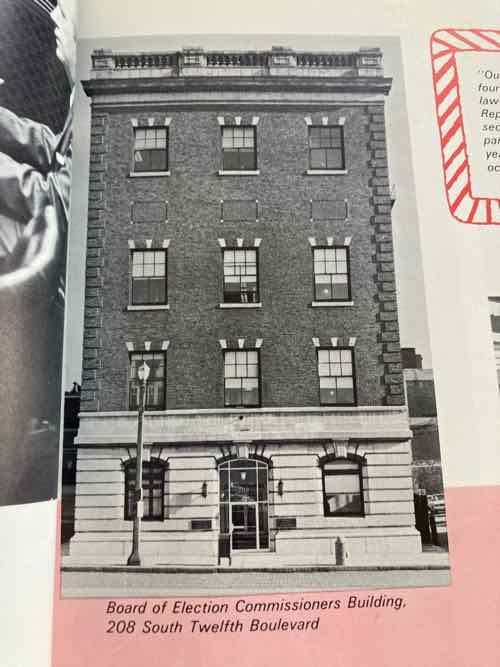Dramatic Changes for St. Louis’ 2023 Primary & General Elections
The 2023 spring municipal elections in St. Louis will be very different than any of us have every experienced. There’ll still be a March primary and an April general — but the primary will be non-partisan, both will begin the change from 28 wards to 14. The primary is 8 weeks from tomorrow.
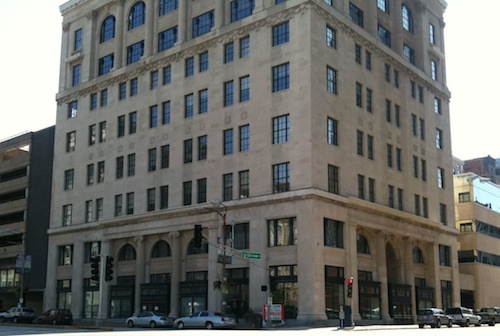
We’ve had the nonpartisan primary for one or two elections, but with 28 total wards. This being the first election downsizing to 14 there are no incumbents — all 14 seats are new and up for election. Seven will be elected to an initial 2-year term, the other 7 to a 4-year term. This will make future elections staggered, with only half the seats up for election every two odd years.
Until changed, races with only 1-2 candidates will be the same for primary & general elections — rather silly. Races with 3+ primary candidates will have the top 2 primary finishers on our general election ballots.
Remember— nearly everyone in the city has a new ward number. The March 7th & April 4th elections are both important — at least wards with 3 or more candidates in the primary.
Okay, let’s look at each race. The number in parentheses is the number of candidates in the primary, the areas listed are some/all of the neighborhoods in this ward. The President and ward headings are all links to relevant maps.
President of the Board of Alderman (1): Citywide
Incumbent Megan Ellyia Green only recently won a challenged special election to finish the term of disgraced Lewis Reed, so it’s no surprise she’s not challenged now. I suspect this will not be the case in 2027.
Ward 1 (3): Bevo Mill, Holly Hills, Carondelet, Patch…
This far south ward has three people running for the seat:
– Annie Schweitzer (current 13th ward alderman)
– Matthew Kotraba
– Tony Kirchner
All three live in the 63116 zip code.
Ward 2 (3): Bevo Mill, Boulevard Hts, Princeton Hts, St. Louis Hills…
This southwest ward also has three candidates:
– Phill Menendez
– Thomas R. Oldenburg (current 16th ward alderman)
– Katie Bellis
All three live in the 63109 zip code.
Ward 3 (1): Dutchtown, Carondelet, Mount Pleasant, Gravois Park…
Current 25th ward alderman Shane Cohn is the only candidate, he lives in the 63111 zip code.
Ward 4 (3): Lindenwood Park, Clifton Heights, Ellendale, Franz Park…
This southwest ward has three candidates — one of several races pitting current aldermen against each other:
– Bret Narayan, current 24th ward alderman
– Joseph (Joe) Vaccaro, current 23rd ward alderman
– Casey Otto
All three live in the 63139 zip code.
Ward 5 (2): Southampton, North Hampton, The Hill, SW Garden…
This south ward has only two candidates, so both will appear on the March & April ballots:
– Joseph (Joe) Vollmer, current 10th ward alderman
– Helen Petty
Both live in the 63110 zip code.
Ward 6 (2): Tower Grove South, Shaw, Compton Heights…
This south ward also has only two candidates, so both will be on both the primary & general ballots:
– Daniela Valezquez
– Jennifer Florida
Valezquez lives in 63110, Florida in 63116.
Ward 7 (3): Gravois Park, Benton Park West, Tower Grove East, Fox Park…
This south ward has three candidates:
– Alisha Sonnier
– J.P. Mitchom
– Cedric (C-Sharp) Redmon
They live in the 63118, 63110, 63104 zip codes, respectively.
Ward 8 (3): Marine Villa, Benton Park, Soulard, Downtown…
This south ward has three candidates:
– Shedrick (Nato Caliph) Kelley
– Cara Spencer, current 20th ward alderman
– Kenneth A. (Ken) Ortmann
Kelley lives in the 63104 zip code, Spencer and Ortmann in 63118.
Ward 9 (3): Forest Park Southeast, Central West End, Kings Oak…
This central corridor ward has three candidates, including 2 current aldermen:
– Tina (Sweet-T) Pihl, current 17th ward alderman
– Michael Browning
– Michael J. Gras, current 28th ward alderman
Pihl and Browning live in the 63110 zip code, Gras in 63108.
Ward 10 (2): Wydown Skinker, Skinker DeBaliviere, Academy, Lewis Place…
This northwest ward has only two candidates:
– Sameem Clark Hubbard, current 26th ward alderman
– Emmett L. Coleman
Both live in the 63112 zip code.
Ward 11 (2): O’Fallon, Jeff Vanderlou, Midtown…
This north central ward has only two candidates:
– Laura Keys, recently elected 21st ward alderman, finishing term of John Collins-Muhammad.
– Carla (Coffee) Wright
Both live in the 63115 zip code.
Ward 12 (5): The Ville, Baden, Mark Twain…
At five, this north ward has the most candidates of any! Seven filed, but one didn’t meet the signature obligation and the other withdrew. The remaining five on the ballot are:
– Darron M. Collins-Bey
– Tishara T. Earl
– Yolanda (Glass) Brown
– Walter Rush
– Sharon Tyus, currently the 1st ward alderman
Collins-Bey, Brown, and Rush live in the 63115 zip code, Earl in 63147, Tyus in 63113.
Ward 13 (3): Wells Goodfellow, Walnut Park (East & West), Baden…
This far north ward has three candidates — all three currently serving on the Board of Aldermen:
– Norma J. Walker, recently elected 22nd ward alderman, finishing term of Jeffrey Boyd
– Pamela Boyd, current 27th ward alderman
– Lisa Middlebrook, current 2nd ward alderman
Walker lives in the 63120 zip code, Boyd in 63136, Middlebrook in 63147.
Ward 14 (4): College Hill, Hyde Park, Old North, Columbus Square…
This north ward is my ward, I’ll have four candidates to choose from in the primary:
– James Page, currently serving as 5th ward alderman
– Brandon Bosley, currently serving as 3rd ward alderman
– Rasheen Aldridge, currently serving as 78th district state representative
– Ebony M. Washington
James Page lives in the 63103 zip code, Bosley and Aldridge in 63107, Washington in 63106.
Current aldermen not running in 2023
The following ten aldermen are not candidates (current ward):
– Dwinderlin Evans (4th)
– Christine Ingrassia (6th)
– Jack Coatar (7th)
– Annie Rice (8th)
– Dan Guenther (9th)
– James Lappe (11th)
– Bill Stephens (12th)
– Carol Howard (14th)
– Jesse Todd (18th)
– Marlene Davis (19th)
Additional thoughts
All this means at least fifteen of the current 27 (there’s one vacancy) ward Board of Aldermen will end their service in a few months. Given that 28 wards are being cut in half to 14 this isn’t a surprise. As many as 25 of the current 27 could be out of office after the general election in April — that number is shocking!
Two former aldermen, Florida & Ortmann, are hoping to return to the board. Both previously lost a reelection bid to a challenger in a democratic primary. Again, city elections are now nonpartisan. Florida will face the same person in the primary and general, Ortmann is in a 3-way race that includes a current alderman so his immediate goal is to finish in the top two in the March 7th primary so he can try to win the April 4th general.
Voter information
I want to leave you with helpful resources to help make your decision and voting easier. I’m very curious if we’ll see any significant change in voter turnout. Analysis will be a challenge since we can’t compare the 14 new apples to apples, but we can see citywide as well as compare old vs new in the same part of town.
Okay, here are some resources for you:
– St Louis Board of Elections: March 7th Primary
– St. Louis Board of Elections: March 7 Candidate List
– St Louis Board of Elections: April 4th General (includes relevant dates)
– Find your ward, poling places, etc (includes locations for no excuse voter information held the two weeks prior to election day, as well as citywide voting locations where any registered voter can cast their ballot on election day.
– Current 28 wards & aldermen (likely won’t be available after primary or general election).
– City’s Redistricting FAQ page (includes link to proposition voters approved way back in 2012 to reduce the number of wards from 28 to 14).
– League of Women Voters/St. Louis (hopefully they’ll conduct some debates, at least the races with 4+ candidates).
— Steve
————————————————————————
St. Louis urban planning, policy, and politics @ UrbanReviewSTL since October 31, 2004. For additional content please consider following on Facebook, Instagram, Mastodon, Threads, Bluesky, and/or X (Twitter).
